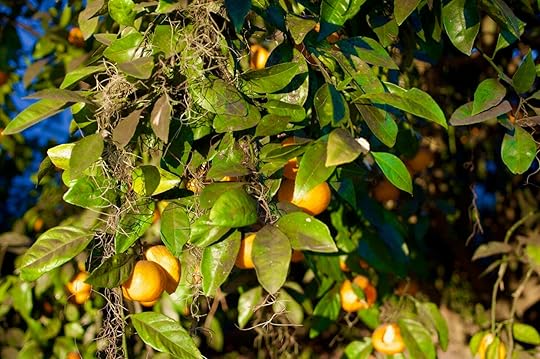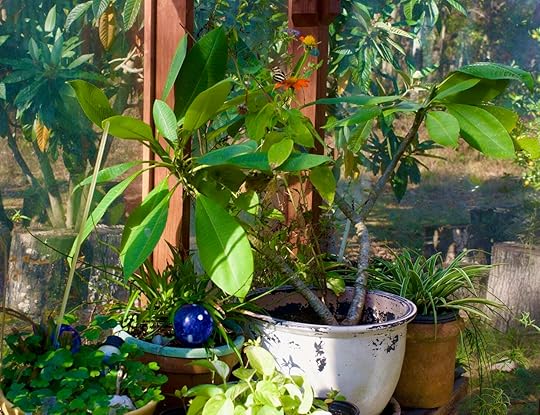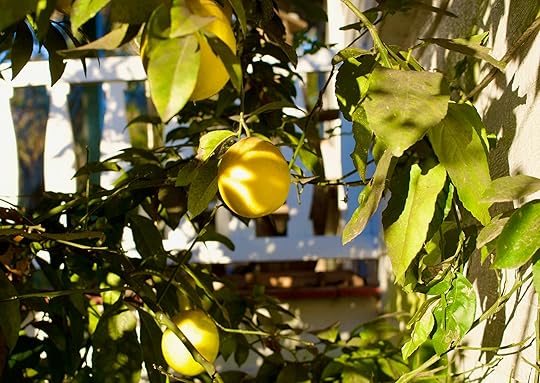Mystery of the Missing Mail
Your source for essays about being human in a wild world and wild in a human world. Thank you for being here.
THE FIRST DAY NO mail arrived we didn’t even notice. The second day with no mail didn’t register either. At evening the third day, I asked Raven, my husband, “Did you get the mail?”
“I checked it,” he replied, serving up mashed potatoes. “No mail.”
Raven and I live on a rural route, thirteen miles from a small village in southern Georgia. Until recently we had to walk a mile—out to a paved road—to check the mailbox, but our latest postmistress, a woman eager to please, allowed us to move the box to our own driveway. (That was the historic location of the box, for 100 years, in fact.)
Now from a bank of kitchen windows we can see a white mail van turn around in our drive, pause at the box, then pull away.
Except we weren’t seeing the van.
Probably we would have chalked up no mail to people writing fewer letters and using more auto-pay. The specter of the pandemic—when a simple letter from Georgia to Florida was taking a month to arrive—still hangs over us.
Usually, however, we get a letter or two a day. We get packages. And at this particular juncture Raven was expecting mail, specifically letters with checks inside them.
 Oil painting by Raven Waters, “Buckeyes.”
Oil painting by Raven Waters, “Buckeyes.” When we first moved to Red Earth Farm, forty-six beautiful acres surrounding a farmhouse built in 1850, our letter carrier was an affable guy named Carl who would drive up to the door and toot his horn. Then he would get out and carefully place a package at our front door. He was friendly with the dogs.
But with the pressure for the U.S. Postal Service to go private—or more private—two routes in our region were drafted for privatization, a trial. Both routes originate in our post office in Reidsville, Georgia. One circuit runs west on 280, toward Vidalia. The other heads west on Highway 147, toward the state prison, the Altamaha River, and our house.
From the post office in Reidsville to the county line is at least twenty miles.
*
Country people like dependability. Probably we all do. If the mail is supposed to arrive at 11, we like for it to arrive. After privatization, dependability was gone. We’d meet one letter carrier, and a few days later someone else would be driving the van.
“Are you the substitute?” I’d ask.
“No, I’m the new carrier,” the mom in sweatpants or the young man with dreads would say.
Three days later, a young woman with counterfeit eyelashes and artificial fingernails would be driving.
One day a guy pulled the mail van up to our back door. He blew the horn. “Packages for you,” he said, popping out. He was slim, gray, but with plenty of energy.
“Gosh,” I said. “We have a new driver?”
“I own this route,” he said. “My last driver quit. I’m trying to find a new one.”
“They all quit,” I say. “How much do you pay them?”
The man’s eyes narrowed slightly. “We pay them $18/hour,” he said. “Plus we provide a vehicle. People just don’t want to work.” His eyes slid sideways.
“Are you from Reidsville?” I asked.
“I live in Daytona Beach, Florida,” he said.
What the man didn’t say, I would later learn, is that the route is labeled a four-hour route. For those four hours, a letter carrier is paid $18/hour. However, if the route takes longer, the carrier doesn’t get paid for the extra time. The carrier also must purchase her own gasoline, and at the end of the month she is reimbursed for gas.
The postmaster is the person who told me this. By then the easygoing woman had transferred, and my pal Michael, whose side hustle is gigantic blow-up bouncy houses for kid parties, was the interim postmaster.
“Four hours?” I said. “How could anyone run that route in four hours?” Round-trip at speed limit would take an hour, then add a stop at every house along the way. I jiggled my head, back and forth. “Not possible.”
Michael handed me my receipt. “All I know is they’re paid for four hours,” he said.
“No wonder they quit.”
One day a middle-aged guy drove up and handed Raven mail through the window. He was the new owner, he said. From Alabama. He had purchased the route and would be delivering the mail until he found a carrier.
One day I looked out and saw the mail van pass. A few minutes later it sped back. It passed my box and kept going. Obviously the new carrier didn’t know the route. Or was lost.
*
When a week passed with no mail, we knew something was wrong. We waited two weeks and went to town. To find the post office open, operating dependably, normally, folks shuffling in to check boxes and buy stamps, was a relief. When you live isolated in the rural, sometimes when your service stops working you think the entire country has shut down. You just haven’t heard about it.
Michael is a very big guy, thirtyish. “We’re not getting our mail,” I said.
“There’s nothing I can do about it,” he said. “That’s a contract route.”
“But you’re the postmaster,” I said.
“Sorry,” he said.
I felt like grinding my molars together. I had to relax my jaw.
“Will you look in the back for our mail? We’re missing checks.” Raven was teaching a painting workshop in an old church we’ve been restoring, and some of the participants had mailed him checks. None had arrived.
Michael left the counter. Soon he returned. “We have nothing back there for y’all,” he said.
“Something’s happening with our mail.”
“I’m getting other complaints,” he said. “Except there’s nothing I can do.”
He told me that one letter carrier pulled up as close to a house as she could and threw a package from her van window onto the porch. Another left a package balanced on top of a mailbox. One dropped boxes in the middle of a person’s lawn. One person’s mail was rubber-banded to the mailbox door, which had been left open.
*
Someone reported a letter carrier parked for 30 minutes on the side of the road on our route.
Michael got in his personal truck and drove to the spot. He searched up and down the roadsides. You know what he was looking for.
Raven had his painting students check their banks—had the checks been cashed?
No, the checks had not cleared.
*
“I sent you some bulbs,” my friend S. wrote. “Did they arrive?”
“They haven’t,” I said.
“Oh, dang,” she said. “They were pink hurricane lilies. And very pretty.”
“Maybe the packaging will disintegrate and they will be found growing along some roadside.”
I didn’t really think the mail was being dumped on the road. I thought it was on a trash truck somewhere, on its way to a swale of a landfill.
*
The next time we went to the post office, Michael advised us to call the postal inspector. If you don’t know the USPS, the postal inspector is serious. That’s like calling the FBI.
Here I want to say that Raven retired from thirty years as a letter carrier and shop steward. You would never catch him saying a bad word against the post office or its workers.
When he was working, city carriers were given thirty days to learn a new route, before held to “making standards.” They were trained. They knew the rules about mail fraud being a federal crime.
But I know for a fact, the contract carriers on our route are not being trained. They are sometimes given one day to learn a route. They may not know what is legal and what is not.
“Our mail is in a landfill somewhere,” I said. But it wasn’t, as you’ll see.
*
After a month passed, late one evening the mail van pulled up and stopped at our mailbox. “Our mail is here!” I said to Raven. He headed for the golf cart and came back with a jewelry-store flier and a life insurance offer from our credit union. “Well, this is not a month’s worth of mail,” he said.
“Our mail is in a landfill somewhere,” I said.
But it wasn’t, as you’ll see.
The next evening the mail didn’t come until after dark. That seemed dangerous, for the worker.
A few days later Raven met the carrier, a young woman in pigtails. She seemed happy to have the job. She was slow, yes, and losing money. But she felt as if she’d get the hang of it, and the route would begin to go more quickly.
But no, soon a different sized arm was tossing our mail into the box. At least the mail was arriving. I wasn’t worrying about unpaid property taxes or missing the notice that I’d won a Pulitzer. (Ha!)
*
Another month passed. One day I saw a call from my neighbor, who everybody calls Honeybun. If you met him, you’d know why, the sweetest, most lovable guy, sugar-coated. Once he used his backhoe to load a huge cedar trunk (downed in a hurricane) for me, then loaned me his truck and trailer to haul it to a sawmill. He manages a couple of hunting lodges near us. One of them was recently purchased from the estate of my neighbor, John Sanders, who died last year.
Honeybun didn’t leave a message so I didn’t return his call. I thought it was a pocket dial.
We were eating supper when he called again. “Ms. Janisse,” he said. “The mail lady stopped today and told me my mailbox was full. I asked her which box and she said the Sanders box. I told her that we didn’t get mail at that box, that I had let the post office know. ‘No, sir,’ she said. ‘It’s full.’ So I grabbed the key and went out to the road.”
I put down my taco. Cheese and lettuce were falling out of it anyway. An idea was forming quickly in my head. This box that Honeybun was talking about is located next to the place where our mailbox used to be. Honeybun kept going.
“When I got out there, the mailbox was stuffed full. I mean, full. You couldn’t get one more piece of mail in there. It had letters, boxes, packages. And all of it is addressed to you and Mr. Raven.”
“Thank heavens,” I said to Honeybun. “You know how long we have been missing that mail? A couple of months. We have been to the postmaster, we’re searched the roads. We were headed to the postal inspector.”
“Well, I have it,” he said. Then he began to apologize, in that Honeybun-way. “I am so sorry. I didn’t know they were putting mail there. I would’ve told you if I’d known.”
“No worries, Honeybun. We’re just grateful you found it.”
Honeybun had to retrieve some hunters from a tree stand, he said, but he’d deposit the mail with his wife. Raven was already lifting from the table.
“Raven is on his way,” I said.
*
The pink hurricane lily bulbs are in the ground. Checks have been deposited. Bills have been paid. Junk mail is in the recycling, except for the plastic pieces, which are in the trash.
Someone has handwritten the numbers “895” really big on the side of our mailbox.
I’m hearing bad news about the postal service from a lot of people. One person told me that he doesn’t mail anything unless it’s certified. Another person didn’t receive a birthday card until three months past her birthday. Another had someone send her a check, only to have the check returned to sender.
When people can’t send things to one another, a country should pay attention.
Also, if the postal service privatizes fully, then this kind of service is what we all can look forward to.
Yesterday afternoon, sunning for a half hour on a cotton blanket in dry brown grass, Little Fawn and I watched a mail van arrive, pause at our box, then pull away. Alone in the sun with the baby, watching her crumble autumn leaves, I wondered pleasantly what might be in the box, what lifeline might connect me to the outer world, what might be headed my way.
*
For weeks this situation was a mystery in our lives: what was happening with our mail, then what had happened to our mail? Every day we revisited the mystery, pondering it from all directions.
Mystery does that to you. It leaves you unsettled, unsure, upset.
So many mysteries never get solved. Some years ago, for example, a new pup on the farm chased two sheep out of their pasture and down into the woods. The pup came home, the sheep never did. A year later a hunter called, asking if we had lost three sheep. “Two,” we said. He had found three, he said, living in the woods. Raven went to check and, sure enough, the hunter had found our sheep. The third one was a lamb the ewe had birthed out in the wilderness. How they lived for that year is a mystery.
Last week I found a set of keys on our electric box in the kitchen. The box is exposed. Someone at some point deposited a set of keys there, out of sight, and there they remain. Was it someone here for a party? How did the person drive home? Had a farm sitter left them?
Like many mysteries, that mystery remains.
But the mystery of the missing mail is solved.
 In Other News🦬 Anywhere Near Thomasville, GA?
In Other News🦬 Anywhere Near Thomasville, GA?
I will be speaking at the iconic, 30-year-old Wildlife Arts Festival this Saturday, Nov. 22. I’ll be on the Thomasville Center for the Arts, Land & Lore stage, at 1 p.m. talking about “Rooted in Wildness: Story, Land, and Belonging.” I follow my friend Shan Cammack, talking about “Young Fires: The Future of Firelighting” and am followed by David Walter Banks, photographer with a new book out from Bitter Southerner Press, Trembling Earth: A Transcendental Trip Through the Okefenokee. I hope you can join us.
🦬 Farm ReportThe pit greenhouse is rebuilt and filled with cold-intolerant plants, all in pots. The frangipani and lady palm are there, along with a few pots of pepper and basil we’re hoping to overwinter.
Chickens are on an egg-laying strike due to shorter days. Occasionally we get a single egg, which we scramble for Little Fawn.
Persimmons are done and citrus is in season. We have Satsuma mandarins, kumquats, and lemons. Citrus does so well here that every year we plant more. (If you own a spot of ground, ask for gifts of fruit trees for the holidays.)
With the cold snap, green grass is done.
All the cows (seven remaining) and horses (five, counting the obstreperous mule) are on winter hay, large rounds that one of us, usually Raven, tractors out into the field. Our farriers don’t last, probably because the job is such an arduous one, and we have a new farrier coming to trim hooves. That is not a job I want to learn. I’m excited to meet the new guy and give him a big tip.
After some sneak attacks on the Seminole pumpkins by chickens, we were able to harvest four. That’s one for Thanksgiving, one for Christmas, one for Dr. King’s birthday, and one for Valentine’s Day. (By the way, Suzy Grindrod added two really interesting pumpkin recipes to the mini-booklet we’re creating together, and I have reloaded it below.)

 The door to the pit greenhouse was open. If you look closely, you’ll notice a zebra longwing butterfly on a torchflower. 🦬 Phenology of the Southern Coastal Plains
The door to the pit greenhouse was open. If you look closely, you’ll notice a zebra longwing butterfly on a torchflower. 🦬 Phenology of the Southern Coastal PlainsThis week I saw the first northern harrier, also known as marsh hawk. Those birds don’t get enough attention. Sometimes when I see one, it appears stark white. Mostly they are dark brown with a white rump. Always they are flowing close to the ground, hunting madly, although sometimes I see them hovering. I feel grateful that I get to spend the winter with them.
I also want to report that killdeer are back from wherever they were. The numbers are still low. I have seen flocks of fifty or sixty birds in our pastures, but recently the numbers are less than ten. Killdeer are quietly declining in my region of the Southeast. The New Hampshire Audubon website uses the words “Strongly Decreasing.” Those are startling, heart-stopping words. How can we reverse that?
We’re still in the throes of autumn foliage. One brief cold snap caused the maples to turn themselves into red lanterns and the sweetgums to jars of honey. We’ve had some wind, and half of the leaves have fallen. Enough remain to color the tree-lines. My son in Massachusetts reports that, in the Northeast, recent stiff winds whipped the beautiful multi-colored foliage from the trees.
Walking the other day, I came upon a Bidens bidens still flowering down in a gully. I counted at least ten zebra longwings on it.
 I think I count three here.🦬 Currently
I think I count three here.🦬 CurrentlyReading: I’m ashamed to admit it, but I will, for the sake of radical transparency: The 4-Hour Workweek by Timothy Ferriss. My work hours are reduced more than half by care for Little Fawn, and I thought the book might give me productivity tips. Do you want to hear more?
Listening to: “Let the Mystery Be” by Iris Dement.
Worrying about: If my healthcare (which for most of my life I did not have, but probably at this age really need) is about to double in price.
Enjoying: Bluebirds in a bare pecan tree. I watch three of them teasing each other, then lining up on one limb. More keep arriving, as if a neighborhood meeting of bluebirds has been called. Phoebes watch from nearby trees.
🦬 Plan Your Memoir Summer 2026I will not be teaching the memoir course, Write Your Own Story, until Summer 2026. There is plenty of room and no hurry to sign up—this is just a heads-up. This will be the only memoir course I offer in 2026, Wednesdays 11am-12 noon Eastern Time, June 3—Aug. 19, 2026. You can find more information on my website. Teaching is webinar style with extra sessions for small-group interaction.
🦬 The Only Magical Craft of 2026 is Fall SemesterTaking care of the baby requires that I slow down for a couple of years. I have made the decision that I will only teach one Magical Craft of Creative Nonfiction course in 2026, on Mondays from 7-9 pm Eastern US Time, Sept. 14—Nov. 2, 2026. There is plenty of time to register and plenty of room in the course. This will be taught webinar style, with extra sessions for small-group interaction, socializing, live editing, and open mic. If you want to think about it, you can find more info on my website.
🦬 Want Me to Notify You About Writing Workshops?On the homepage of my website is a link that says, Get on the List to Be Notified of Upcoming Courses. If you want to be reminded a month before a class starts, or if you want to be the first to hear about one, click that link. That sends an email to me, and I put you on a “Workshop Interest” list. The only information required is your name and email address.
🦬 “Journaling Place” Mini-Series Starts in JanuaryMy project, Nature Journaling School, is designed for you to process, document, and celebrate your life and the world around you. School happens in mini-courses, and in January a new series will begin. The theme is Journaling Place. We’ll look at nature without and nature within. School will be:
7 Sundays in a row between Jan. & Feb. 2026
hour-long sessions
each Sunday afternoon
5-6 pm Eastern US/Canada Time
starting Jan. 11, 2026 and ending Feb. 22, 2026
I will be leading the sessions, with stellar guest artists coming on to teach segments.
Clare Walker Leslie (talking about citizen science)
Madeleine Jubilee Saito (doing place comix)
Melissa DeSa (phenology wheels)
Jeanne Malmgren (guided place meditations)
Jane Pike (book of allies)
Alma Ramiro Alonzo (wildflowers)
As ever, Nature Journaling School is By Donation. Sessions are run webinar style, with plenty of interaction going on in the Chat. Think of this as an hour on Sunday evenings to focus on yourself, your place, your nature, your creativity, your greater community.
Find more information—including a list of what you get—and registration at Eventbrite. Check out the wonderful things people have said.
🦬 A Second Helping of Pumpkin RecipesCheck out our growing cookbooklet.
Seminole Pumpkin Recipes469KB ∙ PDF fileDownloadDownload🦬 As EverThank you for being here. I plan to be back next Wednesday. Until then, be well, be wild, be kind, be of good service. Be like the buffalo.




